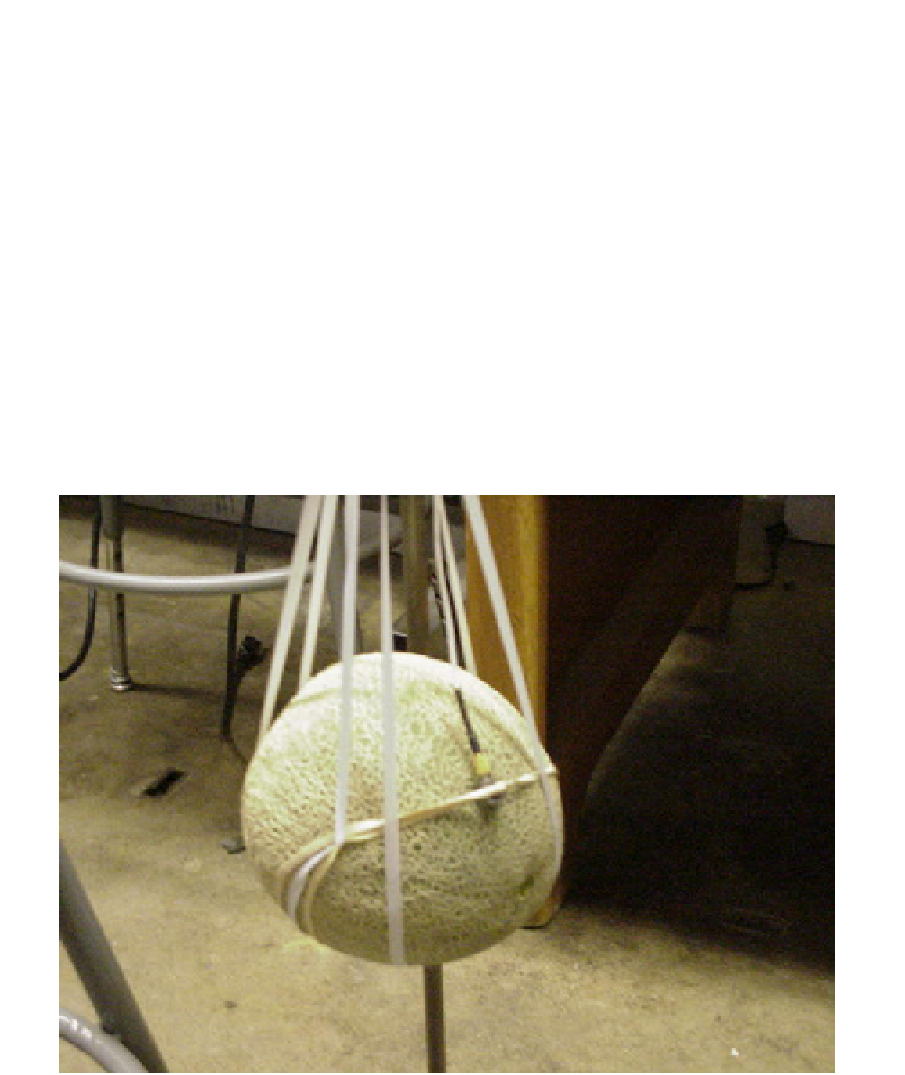Biomedical Engineering Reference
In-Depth Information
Any method used to hold the melon is a boundary condition which will alter the vibration
modes. However, the free-free boundary condition has been proven to not alter the
vibration modes. This boundary condition can be approximated by suspending the melon
from a rigid structure with elastic cords. Soft elastic cords are used in the suspension so that
the rigid-body vibration of the melon and its suspension has very low natural frequency and
does not alter the elastic modes. Figure 19 shows the suspension the setup used for the
holding of the sample.
The porous surface of the melon made it difficult to affix the accelerometer to the surface of
the melon using conventional methods. To make sure the accelerometer was affixed snugly
to the surface of the melon, wax was applied to the bottom of the accelerometer. This
allowed for the mating of the accelerometer to the surface of the melon, which would result
in better vibration transmission. Also the accelerometer was held in place by a “cradle”
made from rubber bands (Figure 20). The width of the rubber bands was approximately 6
mm, just wide enough to cover the top surface of the accelerometer. The rubber band was
positioned in such a way as to apply sufficient pressure so that the surface of the
accelerometer was always held normal to the surface of the melon. This configuration
allowed for an effective and easy-to-move attachment method to install the accelerometer.
Fig. 20. Accelerometer attachment
To excite the fruit a modal hammer with a force transducer was used. A plastic tip was used
as opposed to the metal tip. The plastic tip allowed for the force from the hammer to stay
within the crucial 20dB range past the cut off frequency of 500 Hz. The accelerometer then
measured the resulting accelerations of the surface of the melon. An FFT analyzer
transformed the acceleration and force into the frequency domain, and obtained the ratio of
acceleration to force, which was the Frequency Response Function (FRF) at each sense point.

